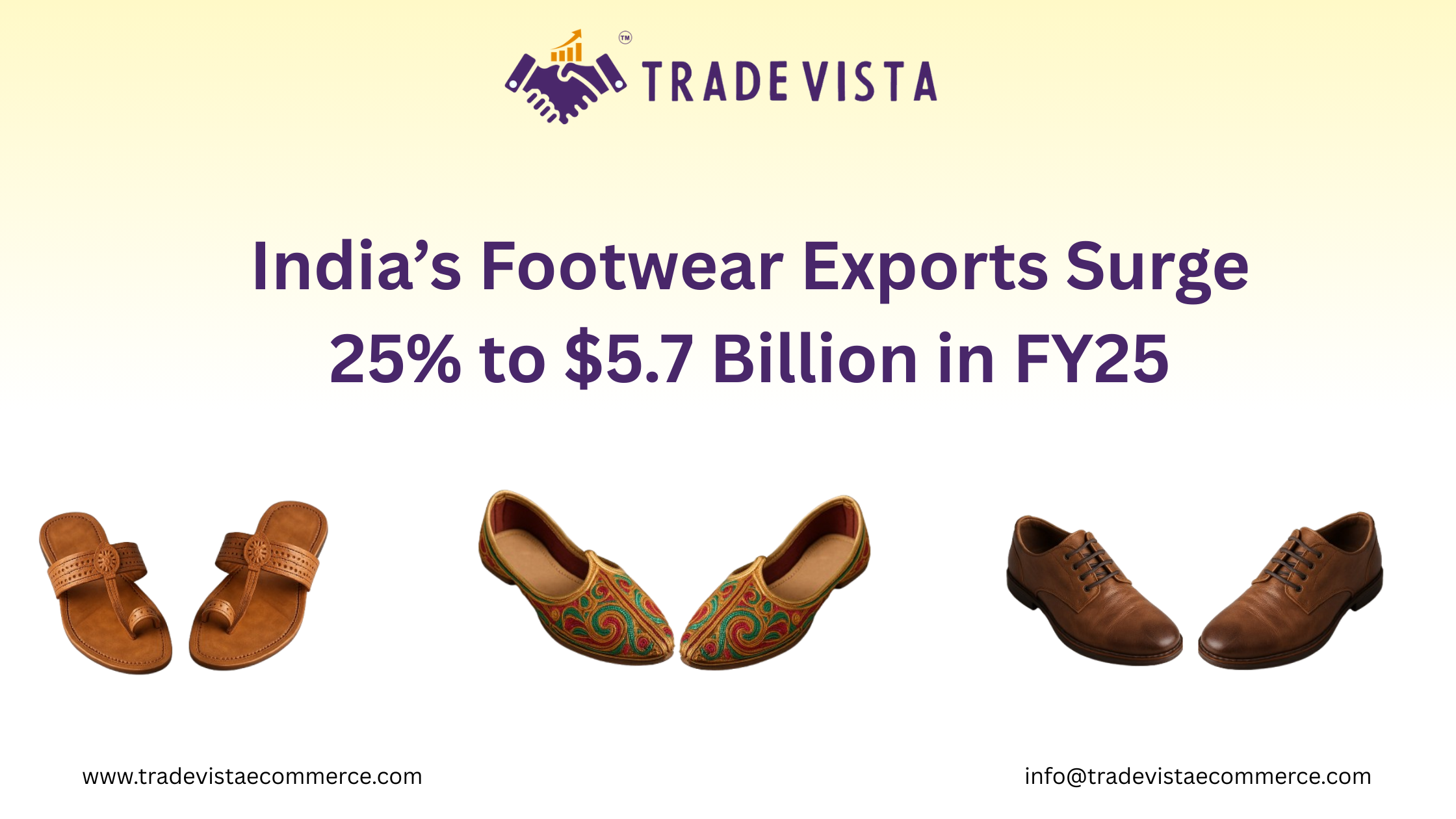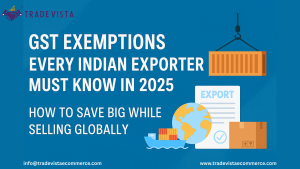India’s Footwear Exports Surge 25% to $5.7 Billion in FY25
India’s leather and non-leather footwear exports have experienced a significant rise of nearly 25% in the 2024-25 financial year (FY25), reaching $5.7 billion, according to the Council for Leather Exports (CLE). This growth is attributed to healthy demand in developed and developing nations, with projections indicating that shipments may exceed $6.5 billion in the current fiscal year.
The Rise of Indian Footwear: What’s Behind the Boom?
Several factors contribute to this impressive growth:
- High-Quality Craftsmanship: Indian footwear is renowned for its handmade quality and sustainable options.
- Diverse Product Range: The industry caters to leather and non-leather segments, meeting varied global demands.
- Unique Indian Styles: Traditional designs like Khadi and embroidered footwear offer unique appeal in international markets.
- Government Support: Initiatives like the Merchandise Exports from India Scheme (MEIS) and the Rebate of Duties and Taxes on Exported Products (RoDTEP) provide financial incentives to exporters.
Opportunity for Local Businesses: Why You Should Export Now
The current global landscape presents a favorable environment for Indian footwear exporters:
- Global Demand: Buyers seek diverse, affordable, stylish footwear options.
- Cost Advantages: India’s competitive labor and material costs enhance its global competitiveness.
- Digital Platforms: E-commerce and B2B platforms like Alibaba.com, Amazon Global, and IndiaMART facilitate international sales.
- International Exposure: Participation in global footwear fairs and expos increases brand visibility and market reach.
Highlight of ‘Khadi India’ & Traditional Appeal
Khadi India has introduced a unique range of footwear made from fabrics like silk, cotton, and wool, aiming to capture international markets. These products blend traditional aesthetics with modern designs, appealing to a global audience seeking sustainable and culturally rich products.
Tips for Indian Footwear Businesses to Start Exporting
To embark on the export journey, consider the following steps:
- Obtain an Import Export Code (IEC): Register with the Directorate General of Foreign Trade (DGFT).
- Join Export Promotion Councils: Engage with bodies like the Council for Leather Exports (CLE) for guidance and support.
- Develop a Digital Catalog: Showcase your products online to attract international buyers.
- Participate in B2B Exhibitions: Attend trade fairs to network and explore market opportunities.
- Utilize Online Marketplaces: Platforms like Alibaba, Etsy, and Faire can help reach global customers.
- Ensure Quality Standards: Adhere to international quality, packaging, and certification requirements.
Vision 2025 and Beyond: Targeting $6.5 Billion+
With the current growth trajectory, India’s footwear exports are poised to surpass $6.5 billion shortly. Exploring untapped markets in Africa, Eastern Europe, and South America can further enhance this growth. Collaborating with designers to create export-friendly product lines will also be beneficial.
The global market is ripe with opportunities for Indian footwear manufacturers and exporters. By leveraging traditional craftsmanship, embracing modern designs, and utilizing government support, Indian businesses can make significant strides in the international arena.
Join the Export Revolution – Start Your Footwear Export Journey Today.
Frequently Asked Questions (FAQs)
1. What are the top countries importing Indian footwear?
India exports footwear to several countries, with the United States, the United Kingdom, Germany, France, and the United Arab Emirates being the primary importers.
2. What types of footwear are exported from India?
Indian exports include a diverse range of footwear such as leather shoes, sports shoes, sandals, slippers, safety footwear, and traditional designs like Kolhapuri chappals and Khadi fabric shoes.
3. Which Indian cities are major hubs for footwear exports?
Key export hubs in India include Agra, Kanpur, Chennai, Kolkata, and Mumbai, which are known for their robust manufacturing infrastructure and skilled labor in the footwear industry.
4. What certifications are required to export footwear from India?
Exporters should obtain certifications such as the Importer Exporter Code (IEC) from the Directorate General of Foreign Trade (DGFT), and may also require BIS certification for specific products.
5. How can I start an export business for footwear from India?
To start exporting footwear, register your business, obtain an IEC, research target markets, ensure product compliance with international standards, and explore platforms like Amazon Global Selling for e-commerce exports.
6. What government schemes support footwear exports from India?
The Indian government offers schemes like the Merchandise Exports from India Scheme (MEIS) and the Rebate of Duties and Taxes on Exported Products (RoDTEP) to incentivize exporters.
7. What is the role of the Council for Leather Exports (CLE)?
The CLE is an apex body under the Ministry of Commerce and Industry that promotes the export of leather and leather products, including footwear, by providing guidance, market intelligence, and financial assistance to exporters.
8. Are there training programs for footwear artisans in India?
Yes, the Khadi and Village Industries Commission (KVIC) offers training programs under the Leather Footwear Activity to enhance the skills of artisans and promote traditional footwear manufacturing.
9. How can I find international buyers for my footwear products?
To find international buyers, participate in global trade fairs, list products on B2B platforms like Alibaba and IndiaMART, and leverage export promotion councils for networking opportunities.
10. What is the future outlook for Indian footwear exports?
The Indian footwear export industry is poised for significant growth, with projections indicating exports may surpass $6.5 billion in the current fiscal year, driven by increasing global demand and supportive government policies.




